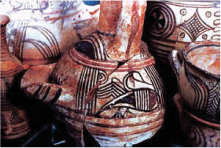The Institute for Palestine Studies (IPS) is the oldest institute in the world devoted exclusively to documentation, research, analysis, and publication on Palestinian affairs and the Arab-Israeli conflict. It was established in Beirut in 1963 and incorporated there as a private, independent, non-profit Arab institute unaffiliated with any political organization or government. It is led by a Board of Trustees composed of scholars, businessmen and public figures from across the Arab world, and by a volunteer Executive Committee elected by the Board.
IPS supports an office in Ramallah (Institute for Jerusalem Studies) and the Institute for Palestine Studies USA in Washington, DC, a 501(c)3 nonprofit educational foundation. These offices have operated in the occupied territories since 1995 and Washington since 1982, respectively. The office in the occupied territories was first located in Jerusalem, where Israeli authorities barred use of “Palestine” in the Institute’s name. It was forced to move to Ramallah in 2000 when Israel’s tightened restrictions on West Bank Palestinians’ access to Jerusalem made it nearly impossible for employees to reach the office.
Throughout the Arab world, IPS is looked upon as the major source of accurate information and analysis on Palestinian affairs and the Arab-Israeli conflict, and as a model of institutional organization and independence. In the English and French speaking worlds, its publications are widely respected and have become mandatory resources for anyone doing serious research on Palestine and the Arab-Israeli conflict.
The Institute’s Constantine Zurayk Library in Beirut is the largest in the Arab world (and one of the finest anywhere) specializing in Palestinian affairs, the Arab-Israeli conflict and Judaica. The collection holds over 78,000 volumes and 248 current periodicals in Arabic, English, French, German, Italian and Hebrew. In addition, the library holds a valuable collection of Palestinian newspapers and periodicals issued before 1948, as well as out-of-print newspapers from the occupied territories, Israel, the Arab world and elsewhere. Its microfilm holdings (6,500 reels) include the proceedings of the World Zionist Congresses and some university theses.
The library also offers a special collection of rare books and collections of private papers of Arab politicians who lived during the earliest phase of the Palestinian national struggle. Its collection of rare historical photographs (numbering over 10,000), documentary films and maps of Palestine makes the library the most distinguished repository of Palestinian history and heritage in the world. The gems of the library’s photographic collection have been showcased in the Institute’s classic book and companion interactive website, Before Their Diaspora, by Walid Khalidi.
 Out-of-Print Newspapers
Out-of-Print NewspapersSince its establishment, the Institute has published over 600 books, monographs and documentary collections in English, Arabic and French. The Institute's first quarterly academic journal, Journal of Palestine Studies, was published in 1971 in Washington, followed by Revue d’études palestiniennes in Paris in 1982, Majallat al-Dirasat al-Filastiniyah in London and Beirut in 1990, and Jerusalem Quarterly in Ramallah also in 1990. Convinced that knowledge of Hebrew and Israel are prerequisites for serious study of the Arab-Israel conflict, IPS notably cosponsored, with the American University of Beirut, the first classes in modern Hebrew in the Arab world. Throughout the 1960s and 1970s, it published a regular monthly digest in Arabic of unexpurgated translations from the Israeli press. IPS has continued this trend by translating Hebrew sources into Arabic.








